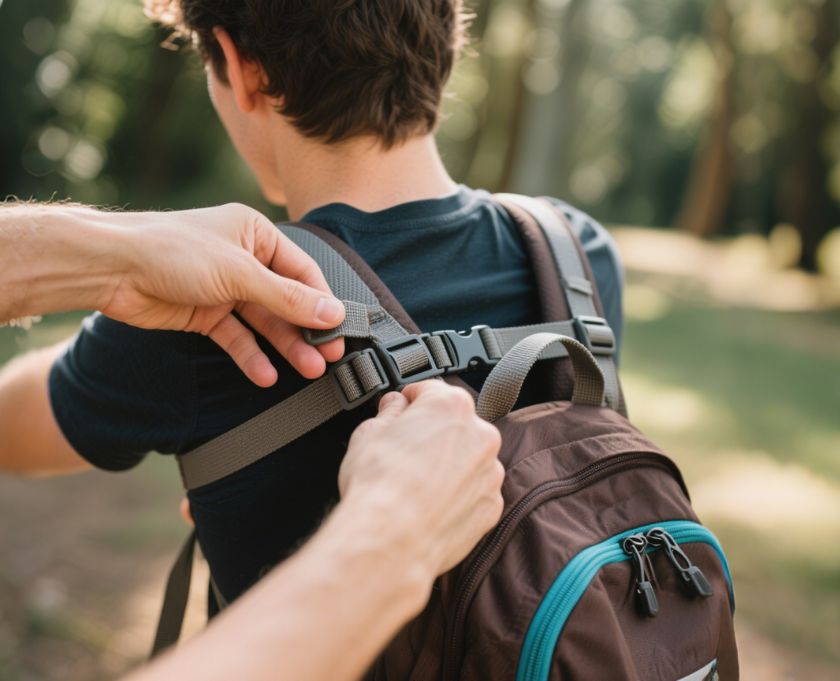Beautiful Plants For Your Interior

Carrying a backpack is a part of daily life for many, whether you’re commuting to work, hiking, or traveling. However, if your backpack straps are not adjusted properly, it can lead to discomfort and long-term back problems. In this guide, we’ll walk you through the best ways to adjust your backpack straps to promote better posture and improve back health.
Why Adjusting Backpack Straps Matters
Improperly adjusted straps can cause muscle strain, back pain, and even contribute to poor posture. By ensuring that your backpack is positioned correctly, you can distribute the weight evenly across your body, reducing the pressure on your spine and muscles.
Key benefits of properly adjusted straps:
- Prevents shoulder and back pain
- Promotes better posture
- Reduces muscle fatigue
- Distributes weight evenly across the body
Step-by-Step Guide to Adjusting Backpack Straps
1. Start with the Right Fit
Before adjusting the straps, ensure your backpack fits your body size. The backpack should sit comfortably on your back without sagging too low or sitting too high. The top of the backpack should be about 2 inches below your shoulders.
2. Adjust the Shoulder Straps
- Loosen or tighten the shoulder straps to find a snug but comfortable fit. The straps should sit flat on your shoulders and not dig into your skin.
- Position the straps so the backpack sits above your hips, not lower, to avoid unnecessary strain on your lower back.
- Ensure that the straps are equally adjusted on both sides to avoid discomfort or imbalance.
3. Tighten the Chest Strap (Sternum Strap)
The chest strap is designed to stabilize the backpack and help reduce strain on your shoulders. Adjust it so that it sits comfortably across your chest, not too tight or too loose.
- A properly adjusted chest strap helps to distribute the load evenly and prevents the backpack from shifting as you move.
- It should be adjusted higher for people with a shorter torso and lower for taller individuals.
4. Adjust the Hip Belt (If Available)
For larger backpacks, particularly hiking or travel backpacks, the hip belt is crucial for distributing weight and reducing the strain on your back.
- Position the hip belt so it sits snugly across your hips, not on your waist. It should rest on the top of your pelvic bone to maximize weight transfer.
- Tighten the belt so that most of the weight is supported by your hips, not your shoulders. This will significantly reduce the load on your back and improve posture.
Signs That Your Backpack Straps Need Adjustment
Even with the perfect adjustment, you may still experience discomfort if the straps are improperly positioned or too tight. Here are some signs that it’s time for a re-adjustment:
- Back or shoulder pain: If you start feeling sore or uncomfortable in your back or shoulders, the straps may be too tight or the backpack may be sitting too high or low.
- Uneven weight distribution: If one side of the backpack feels heavier, the straps may be uneven, leading to muscle strain.
- Slouching posture: If you’re leaning forward or hunching while carrying your backpack, it means the straps are not adjusted to maintain proper posture.
Additional Tips for Maintaining Backpack Comfort
- Use a backpack with padded straps: For added comfort, choose backpacks with padded shoulder straps and lumbar support to cushion your back and shoulders.
- Take breaks: If you’re carrying a heavy load, take regular breaks to stretch and relieve pressure on your back and shoulders.
- Avoid overloading: Only carry what you need. A heavy load can strain your back, no matter how well the straps are adjusted.
Conclusion: Prioritize Posture for Better Health
Adjusting your backpack straps properly is essential for maintaining good posture and preventing long-term back issues. By following these simple steps, you can ensure that your backpack fits correctly, distributes weight evenly, and helps you stay comfortable throughout the day. Whether you’re a busy professional, a traveler, or someone who just carries a lot, investing a few minutes in strap adjustments will make a significant difference to your back health.
Remember, small adjustments can lead to big improvements in comfort, so take the time to find the right fit and keep your back happy!